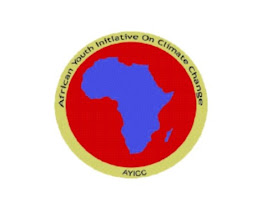Africa’s Sustainable Cities – Tree Cover
This Post Was Originally posted on OYGKmag.com
For the past four years, I’ve been talking to my peers; trying to convince them that my career path [in Environment], is more than just planting trees. Well, I’ve come to the realization that most of the work I do revolves around trees. There’s no shame to this truth. Increasing forest cover is part of the country’s sustainable development plan and to quote very intelligent scientists:
I cannot emphasize enough the importance of trees in maintaining the stability of our ecosystems. They are catchment areas for rivers, habitats for animals, sources of food and raw materials for our industries such as wood, medicines and most importantly, they absorb carbon from the atmosphere.“Trees are the greatest and most efficient innovation in combating climate change”
Away from digression, this article is about how African cities can be sustainable.
I am a city dweller. I have lived in Nairobi for the past 20 years, which is 98% of my life, and through most of it I was conscious: Conscious not in being present, rather in being aware of my surroundings and the subtle changes that occur in my habitat. Through the years, I have made an observation – Our estate road would be re-tarmacked, and a few months later, conveniently crumble before the next election cycle. I was intrigued and upon consulting with the estate “Wise-man”, I’d be told that it was in an effort to lure voters. The repair works would symbolize progress that would be cashed in for votes. Politics!
More than half the world’s population live in cities and 6 out of 10 people will be urban dwellers by 2030. This trend is set to put on even more pressure on already stretched out resources: Housing for example, where already 55% of the urban population in Sub- Saharan Africa live in slum-like conditions. Cities in Africa face: Unemployment, congestion, waste management, pollution, inadequate housing, insecurity and water shortages. The big question is how the issues can be solved using sustainable approaches and cater to environmental protection.
Aiming for sustainability
Sustainability is the buzzword for this decade.What does it mean though? – we are expected to utilize our current resources in a way that will not undermine the ability of future generations to meet their needs. Principle 4 of the Rio Declaration provides: “In order to achieve sustainable development, environmental protection shall constitute an integral part of the development process and cannot be considered in isolation from it.” In order to fully understand how cities can achieve sustainability, we need to evaluate the challenges they face. Thereafter addressing them using practical means rather than aggravate their effects.Trees… again
Back to the planting of trees, scratch that – growing trees. There’s a difference. Tree planting involves putting a seedling in the ground and watering it in one day. Tree growing is planting the seedling and caring for it until it has established itself. An established seedling has improved chances of survival.Trees play an important role in urban ecosystems, because they are an effective mitigator to urban carbon emissions. They contribute significantly to the purification of air which is an essential service in an urban setting where air polluting factors are in plenty; from vehicles, industries and even buildings. Indiscriminate deforestation and encroachment of protected areas undermine the 10% annual forest cover goal set by Kenya.
Strategies to encourage tree cover
Tree planting and tree adopting programs
Nationwide tree planting activities and initiating tree adopting programs in schools and institutions will not only engage students in environmental matters but also instill a sense of responsibility to protect the environment.Indigenous trees
Indigenous trees (for example the Fig tree) are better adapted to the local climates and are more efficient in carbon sequestration. They host a larger array of biodiversity as compared to exotic trees. The leaves of a Mugumo tree have more species of insects such as snails and moths than the leaves of a eucalyptus which has less if any.Incorporating green spaces into urban planning
It is evident that tree planting and natural regeneration are not enough to counter the declining tree cover in cities. Though that may be the case, if these strategies weren’t in place, the loss of tree cover would be higher. Natural regeneration basically means giving time and letting whatever grows grow. Shrub maintenance is low costing but can lead to establishment of undesired tree species. Furthermore, in growing cities where there are perpetual development pressures, the vegetation doesn’t have the luxury of time to regenerate naturally. Integrated planning should design public spaces to allow for tree growing. Increasing green spaces in urban areas should be an integral part in the development planning of any town.Posted by Michael Musyoka
Twitter: @mikesyoka
Email: michaelmusyok@gmail.com

Comments
Post a Comment